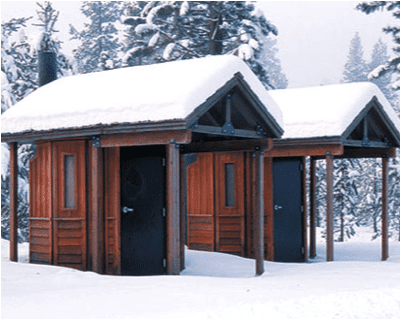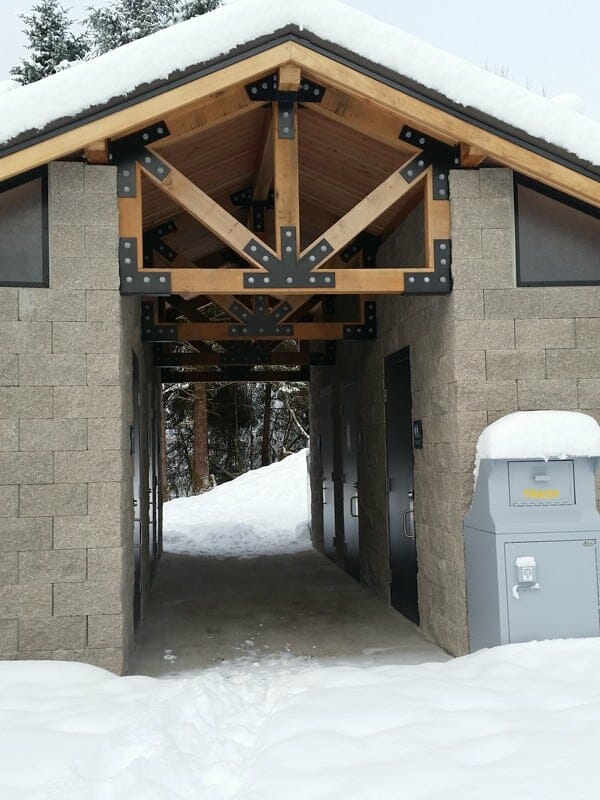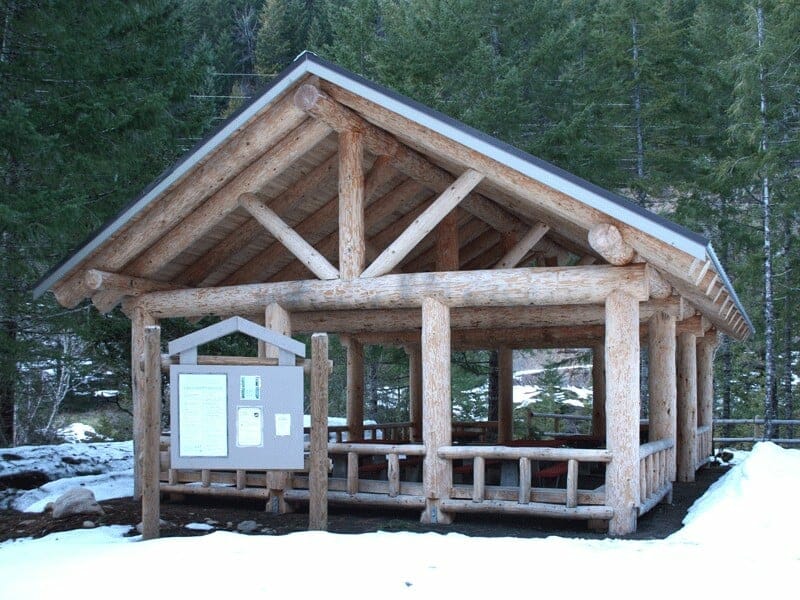
The United States contains many different climates within its borders, ranging from the tropical Florida atmosphere to the snowy mountains in the north. Massive mountain ranges stretch through the states, including Idaho, Utah, and Colorado, and, in the higher elevations, many cities and towns experience a heavy snowfall each winter.
While it floats softly down through the air, snow can be deceptively heavy. If snow accumulates on top of structures, it puts an additional load on the structure and can cause serious damage, and even cause a structure to collapse. In areas that experience regular snow fall, buildings must be designed to withstand the snow and/or be designed with features to minimize snow accumulation.
The minimum weight of snow that a structure can support is the “snow load” and many districts in higher elevations or northern states have a snow load requirement that needs to be met. Failure to meet the snow load requirement can be disastrous. Romtec has experience meeting codes in areas all throughout the country, including areas like Colorado that can experience high snow fall.
In addition to meeting the snow load of the building, there are additional ways that Romtec can design buildings to withstand winter snow flurries.
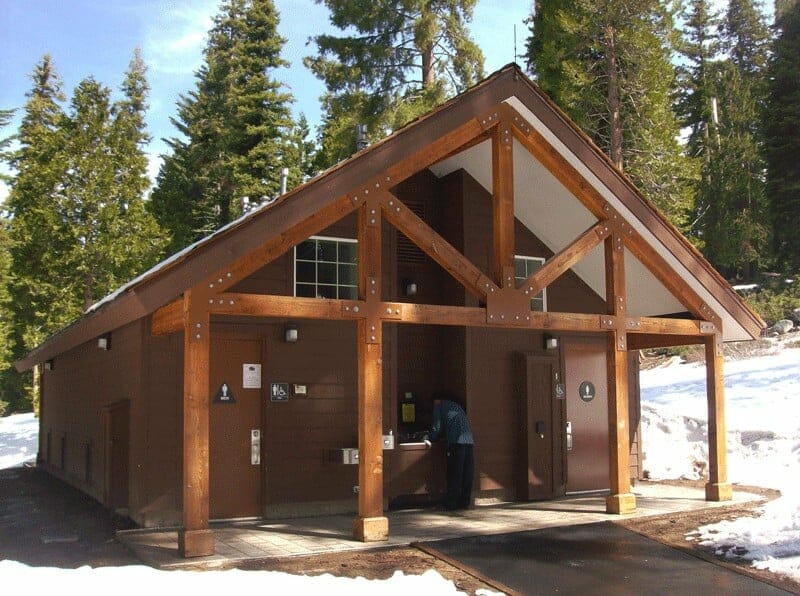
Steep Roof Slopes & Privacy Screens
One simple design feature that can greatly affect snow load/accumulation is steep roof slopes. This design causes the snow to easily slide off of the roof, especially on the sleek metal roofing that is a typical choice on Romtec structures. Steep roof slopes are common in areas that experience high snow volume, and can be a defining factor in the life of the building.
Snow falling off of the roof can be a problem, however. While this mostly causes minor injuries or inconveniences, larger clumps of snow can cause serious injuries to guests if they fall. To combat this, snow guards can be installed along the roofline that will break up the snow as it slides off.
Design choices for snow are not limited to just the roof of the structure. Snow can create problems for guests entering and exiting the building by accumulating in front of the doors. Designing a building with protected entrances can greatly affect the usability of the building, and can be achieved in a number of ways. One such way is designing the building with a privacy screen, which will prevent some of the snow from building up, while also protecting guests from the elements while entering or exiting the structure.
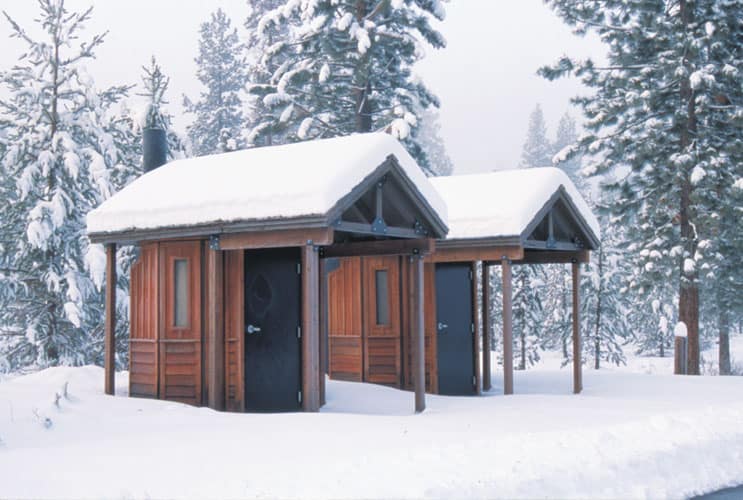
Breezeways
In larger structures, a breezeway through the center of the structure provides a similar effect to the privacy screen while accommodating an increased number of entrances. With this design, the inward facing doors are protected by the structure itself rather than constructing an additional privacy screen or wall. This design choice was used on the West Glacier project, located in Alaska in the Tongass National Forest.
At the West Glacier trailhead, guests can hike several trails with the opportunity for biking and skiing including a hike up the summit of Mt. McGinnis to see the Mendenhall Glacier, Mendenhall Lake, and the variety of plant life that has grown as the glacier has retreated.
The West Glacier Trailhead attracts a high number of guests, and needed a high-use restroom that would be able to withstand the snow in Alaska. The trailhead is just 12 miles from Juneau, and is a popular attraction. The West Glacier restroom features 6 vault restrooms total, with 3 on each side of the breezeway through the center of the building.
Winterizing a Plumbed Structure
While snow can cause a lot of damage on its own, the cold temperatures that allow for snow can also cause damage to a structure. Freezing pipes are one of the biggest concerns when it comes to cold winters as the water inside the pipes can expand enough to burst. Romtec offers the option to winterize a plumbed structure, which is achieved by adding a main valve to the mechanical space to drain all of the plumbing. By removing the water from the pipes, there is no longer a need to worry about freezing water and burst pipes caused by the cold.
Winterizing, as above, requires that a building be shut down for the winter. For facilities that need to be open year-round, heat tape can be applied to the pipes to mitigate the risk of freezing. Heat tape simply keeps the pipe warm to help prevent freezing.
Colder climates in Idaho, Utah, Colorado, and other states along the Rocky Mountains may have snow and building requirements that need to be met to ensure the stability of the structure. Romtec has experience with meeting required snow loads and designing structures with steep roof slopes, snow guards, and inward facing doors to provide a restroom that can be easily accessed by guests and will withstand the snowy winter. Aside from requirements by the building department and inspector, Romtec also goes out of our way to better understand your building and your environment in order to propose the best design for your guests.

